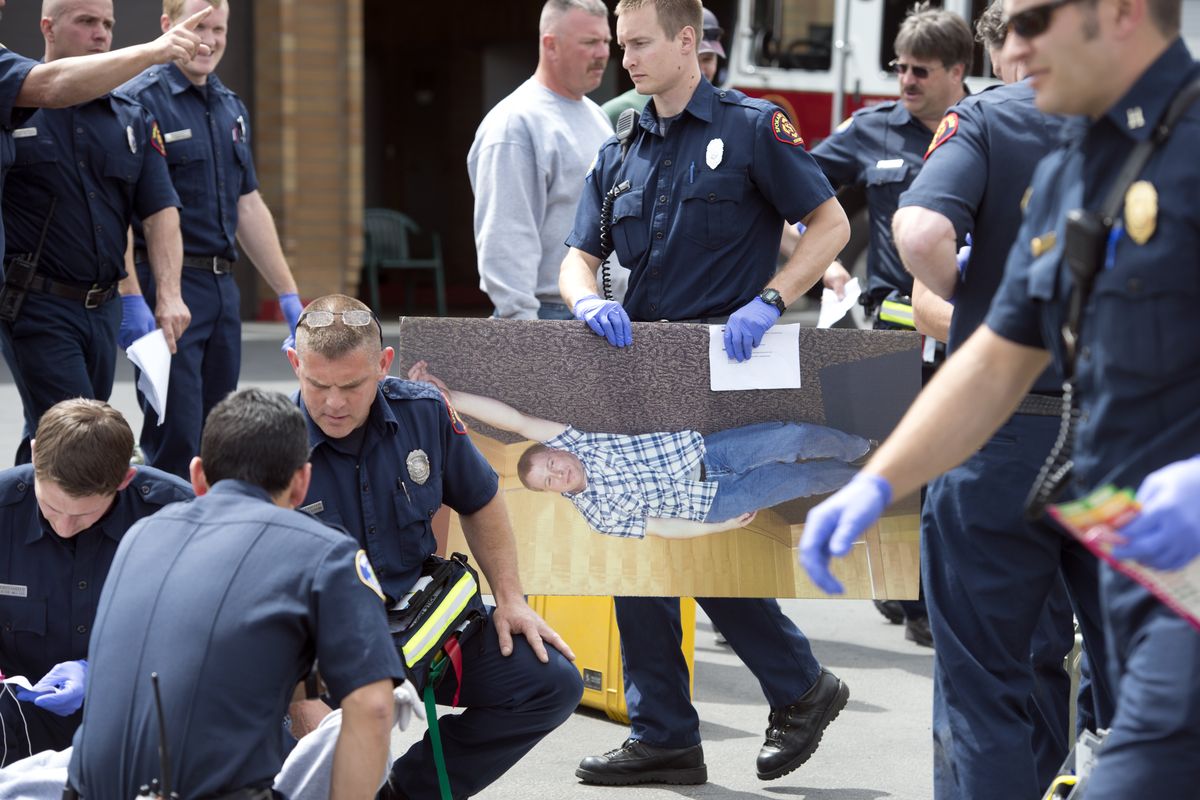Training for the worst
SVFD made sweeping changes to its mass casualty triage system

The radio crackled to life with reports of a mass casualty incident with at least 12 people wounded by gunfire in the old Spokane Valley Fire Department administration building Wednesday, but it was all just a training scenario to help test the department’s new triage system.
Off-duty firefighters played some of the victims while others were represented by life-size pictures. A team of firefighters went in the building to triage the victims while others stripped their trucks of equipment and prepared a treatment area in the parking lot.
In this scenario, the scene had been declared safe by police, said Capt. Pat Schaffer, although police didn’t participate in this week’s training.
“They take away the threat, and we pick up the pieces,” he said of police officers.
Under the new triage system, victims are marked with a green ribbon for no significant injuries, yellow ribbons for minor injuries, red for serious injuries or black for deceased. The department previously used paper tags looped around the neck with a string, but those kept getting ripped off as patients were carried away, Schaffer said. Now the tags are used later in the treatment process so there is less chance they will be lost.
Another change to the department’s triage system is the way children are evaluated. The old method used heart rate and respiratory rate to determine if someone needed immediate treatment, with no differentiation between children and adults.
“A kid with a respiratory rate of 36 might be normal, but in an adult, it’s an indication of trouble,” Schaffer said. “Pediatric patients were getting overly treated.”
The older standard also measured how well victims responded to commands, which is something children sometimes have trouble with on a normal day. “They’re going to react like a kid,” Schaffer said.
Child patients were represented by life-size pictures during the training sessions this week.
On Wednesday afternoon, the first patient out the door was firefighter Mike Patterson playing someone who had been shot several times in the abdomen. “I started as a red patient and then went to black,” he said.
It was Patterson’s first experience with mass casualty training. He’s been with the department for a year and was scheduled for his own training session Thursday. “The goal is to find the most patients we can help immediately,” he said.
The patients were brought outside for treatment partly because the building the firefighters were using has small rooms, narrow corridors and tight corners. People would be tripping over patients and equipment, Schaffer said. They were also brought out in an effort to preserve the “crime scene” as much as possible, he said. “We don’t want to contaminate that more than we have to,” he said.